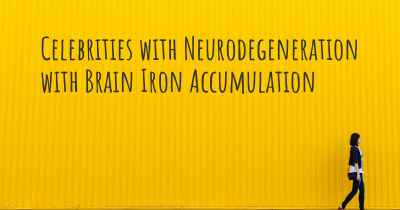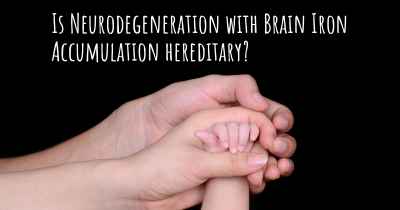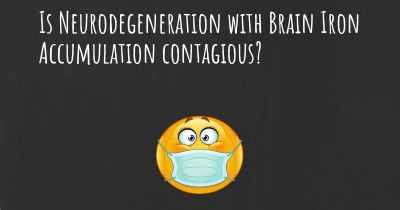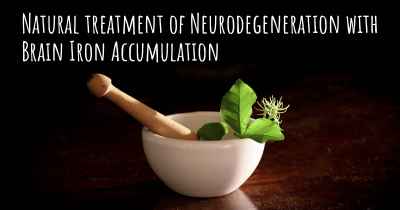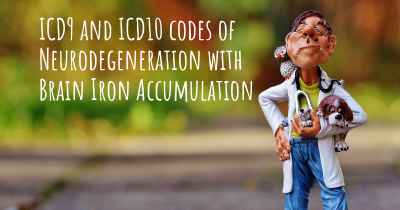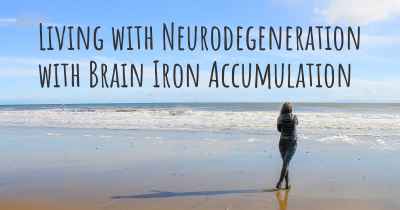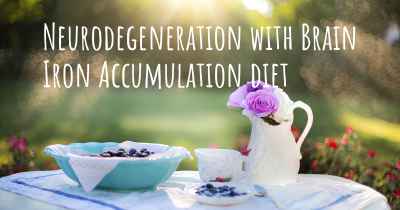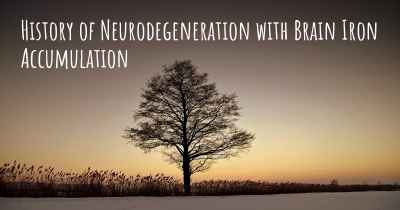What is the life expectancy of someone with Neurodegeneration with Brain Iron Accumulation?
Life expectancy of people with Neurodegeneration with Brain Iron Accumulation and recent progresses and researches in Neurodegeneration with Brain Iron Accumulation
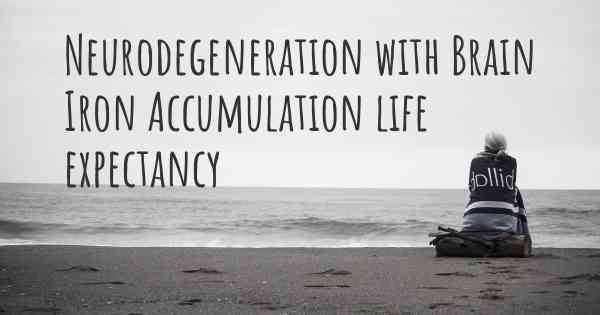
Neurodegeneration with Brain Iron Accumulation (NBIA) is a rare genetic disorder characterized by abnormal iron accumulation in the brain, leading to progressive neurological symptoms. The life expectancy of individuals with NBIA can vary significantly depending on the specific subtype and its severity. Some subtypes have a more rapid disease progression, resulting in a shorter lifespan, while others may have a more indolent course. Unfortunately, there is no cure for NBIA, and treatment mainly focuses on managing symptoms and improving quality of life. It is crucial for individuals with NBIA to receive comprehensive medical care and support from a multidisciplinary team to optimize their well-being.
Neurodegeneration with Brain Iron Accumulation (NBIA) is a group of rare genetic disorders characterized by abnormal iron accumulation in the brain, leading to progressive neurological deterioration. There are several subtypes of NBIA, including pantothenate kinase-associated neurodegeneration (PKAN), phospholipase A2-associated neurodegeneration (PLAN), and aceruloplasminemia, among others. Each subtype has its own unique features and prognosis.
PKAN is the most common subtype of NBIA and is caused by mutations in the PANK2 gene. It typically presents in childhood or adolescence and is characterized by progressive dystonia (involuntary muscle contractions), dysarthria (difficulty speaking), and spasticity (muscle stiffness). Other symptoms may include cognitive decline, psychiatric disturbances, and visual impairment. The disease progresses slowly but steadily, leading to severe disability in most cases.
PLAN is another subtype of NBIA caused by mutations in the PLA2G6 gene. It can present in childhood, adolescence, or adulthood and is characterized by a wide range of symptoms, including dystonia, parkinsonism (movement abnormalities similar to Parkinson's disease), spasticity, and cognitive decline. The rate of disease progression varies among individuals, with some experiencing a more rapid decline than others.
Aceruloplasminemia is a rare subtype of NBIA caused by mutations in the CP gene, leading to a deficiency of ceruloplasmin, a protein involved in iron metabolism. It typically presents in adulthood and is characterized by iron accumulation in various organs, including the brain. Symptoms may include movement disorders, cognitive impairment, diabetes, and retinal degeneration. The disease progresses slowly, but the rate of progression can vary among individuals.
The life expectancy of individuals with NBIA can vary depending on the specific subtype and the severity of symptoms. Unfortunately, there is no cure for NBIA, and treatment options are limited to managing symptoms and providing supportive care.
PKAN is generally associated with a shorter life expectancy compared to other subtypes of NBIA. Most individuals with PKAN survive into their 20s or 30s, although some may live into their 40s or beyond. The disease progression and severity of symptoms can greatly impact life expectancy. Complications such as respiratory infections, swallowing difficulties, and contractures (permanent shortening of muscles or tendons) can contribute to a decline in overall health.
PLAN has a more variable prognosis, with some individuals experiencing a relatively stable course of the disease for many years, while others may have a more rapid decline. Life expectancy can range from childhood to adulthood, with some individuals surviving into their 50s or beyond. The rate of disease progression and the specific symptoms experienced can greatly influence life expectancy.
Aceruloplasminemia is generally associated with a longer life expectancy compared to PKAN. Most individuals with aceruloplasminemia survive into adulthood and can have a near-normal lifespan. However, the disease can still significantly impact quality of life due to the progressive nature of symptoms and the potential for complications such as diabetes and retinal degeneration.
It is important to note that these are general trends and individual cases can vary significantly. The progression of NBIA can be unpredictable, and some individuals may experience a slower or faster decline than expected. Additionally, advancements in medical research and potential future treatments may impact the prognosis for individuals with NBIA.
